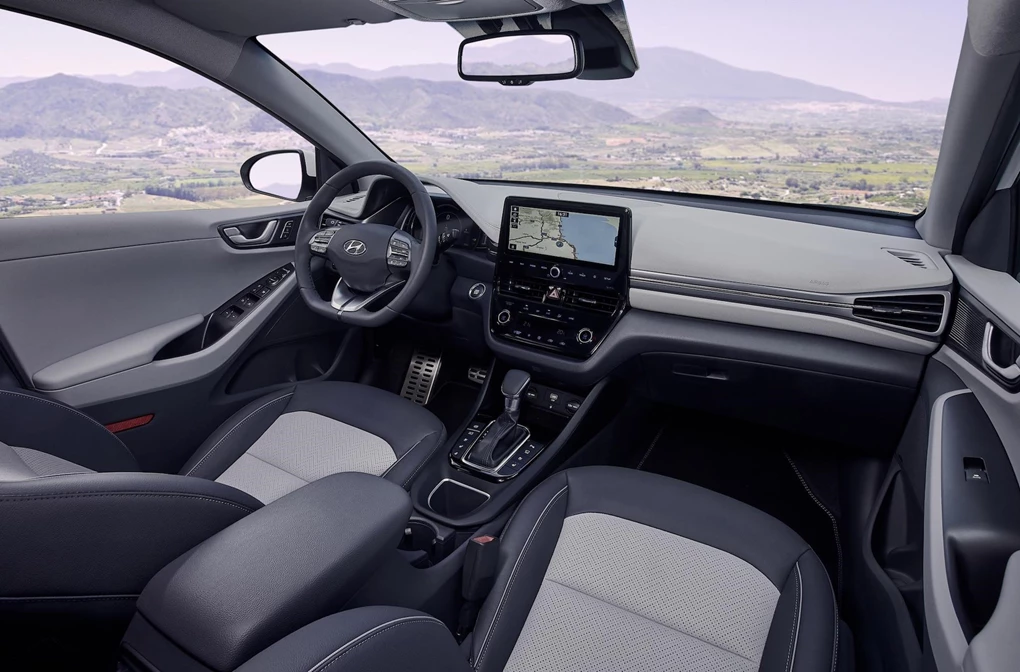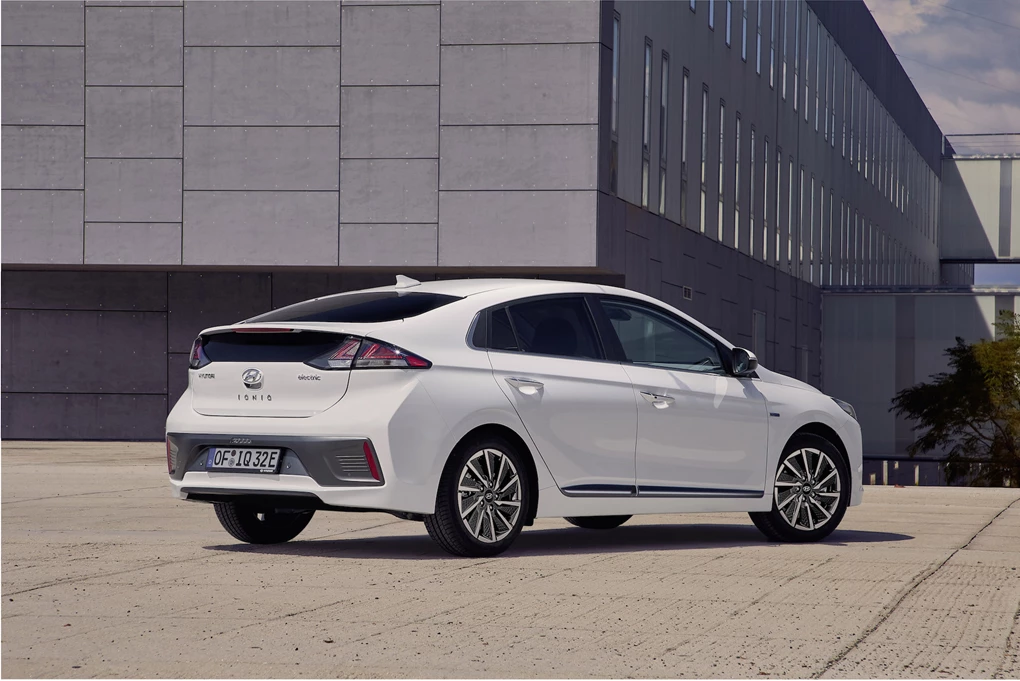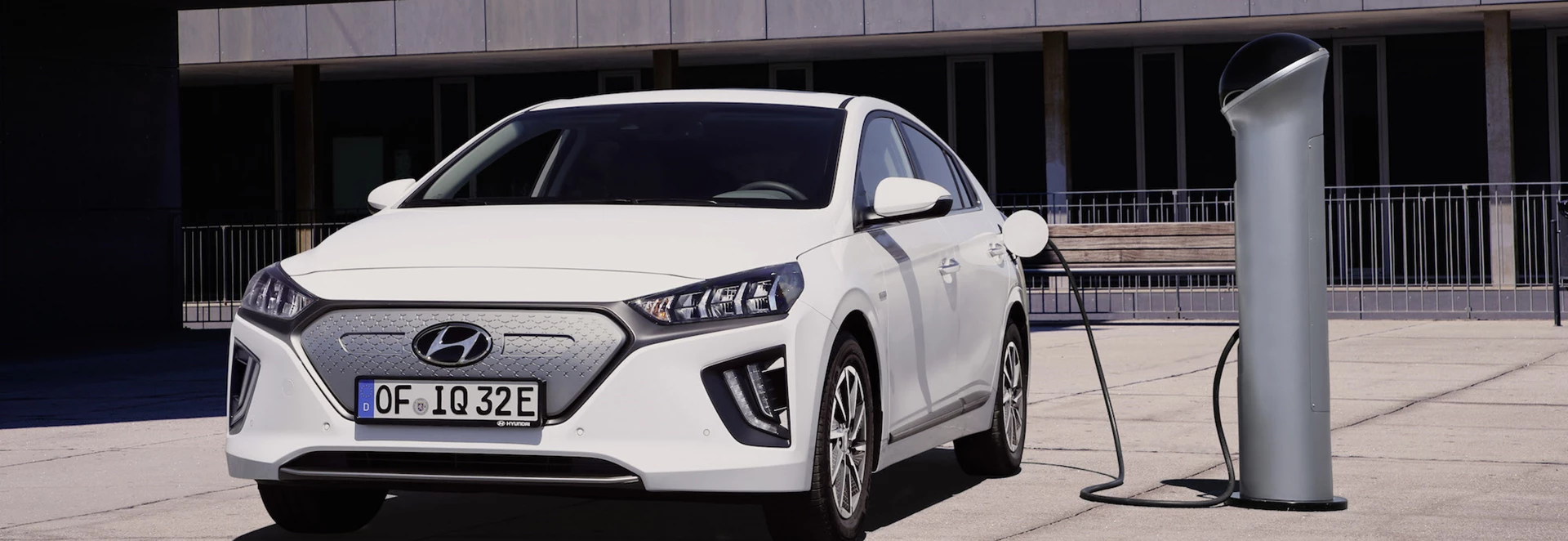The IONIQ was a real statement of intent from Hyundai and its goals for electrification — becoming the first production car to ever be offered with the choice of three electrified powertrains – a traditional hybrid, a plug-in hybrid and a fully-electric version.
Even three years after it first went on sale, it’s still quite different in the sense that it’s still one of few cars with such a range of electrified powertrains.
Here’s what you need to know about the IONIQ…
What powertrains are available?

As we’ve already mentioned, the IONIQ can be had with a traditional hybrid setup, a plug-in powertrain or with all-electric power.
The standard IONIQ Hybrid uses a 1.6-litre GDI petrol engine, which is paired to an electric motor and a six-speed dual-clutch automatic transmission. It delivers 104bhp and 147Nm of torque, while the Hybrid is also capable of returning 62.8mpg, with CO2 emissions of 84g/km.
The plug-in hybrid is ideal for those who are regularly able to charge the PHEV’s batteries, but want the confidence of a petrol engine there on longer journeys. This too uses the same 1.6-litre petrol engine as the traditional hybrid, but the larger electric motor means a total output of 139bhp is possible. Hyundai claims this can achieve 32 miles on electric power alone, along with a claimed fuel economy figure of 247.8mpg, and CO2 emissions of 26g/km.
The fully-electric version uses an electric motor, which produces 118bhp, and is paired to a 28kWh lithium-ion battery pack. Hyundai claims the Electric model can achieve 174 miles between charges, while because it’s an EV, there are no emissions, either.
What trim levels are offered?

Buyers can choose between three grades, depending on version. These include SE, Premium and Premium SE. The equipment highlights are as follows.
SE – from £21,795 (hybrid)
The SE comes with 15-inch alloy wheels, a leather steering wheel, electric lumbar support on the driver’s seat, dual-zone climate control, LED daytime running lights, cruise control, a five-inch touchscreen, automatic emergency braking, parking sensors and a reversing camera.
Premium – from £23,595 (hybrid), £28,395 (PHEV), £30,750 (Electric)
Over SE, this offers heated front seats, an auto-dimming rear-view mirror, power-folding door mirrors, keyless entry and start and an eight-inch touchscreen with smartphone connectivity and satellite navigation.
Premium SE – from £25,395 (hybrid), £30,195 (PHEV), £32,550 (Electric)
On top of Premium, this adds ventilated and electric front seats, leather seats, heated rear seats, automatic wipers, front parking sensors, blind spot monitoring and rear cross traffic alert.
Note: Electric prices exclude the government’s £3,500 EV grant
What about personalisation?

The IONIQ isn’t a model that majors on personalisation, with Hyundai choosing to prioritise high equipment levels over offering optional extras – in fact there are very few things you can spend money on over the list price.
Buyers can choose between a number of colours, though. Polar White is the standard colour, but there’s also numerous metallic shades available. These include Phantom Black, Fiery Red, Iron Grey, Platinum Silver and Intense Blue. Each of these is a £565 optional extra.




